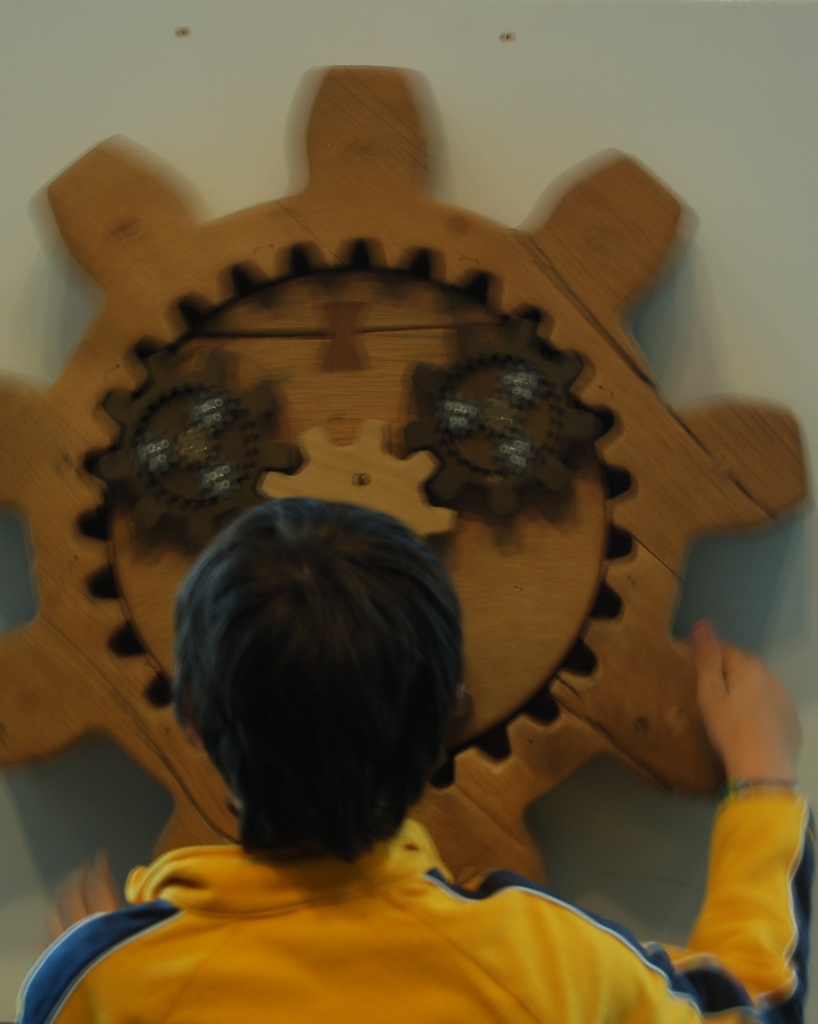21 May 2010
Lessons for scientists from the artistic process
A perennial concern for those interested in science communication is figuring out how to engage the public while still providing an accurate window into the world of science.
Dan Pearce, a former NASA aerospace engineer and an artist, thinks one strategy can hit both of those marks.
His solution? “Make [the scientific process] human.”
“I think the (general public) has this mythical image of the scientist as this superhuman creature, and it makes them nervous,” he says.
Showing the process of science, not just the breakthroughs, will help engage people and let them see how science really works, Pearce says.
Pearce worked at NASA for almost a decade doing computational fluid dynamics. He says the technical nature of his field created a barrier when he tried to talk about work with friends.
“They all knew what the shuttle was, they’d all seen it launch many times, and that was about as far as they were willing to go,” Pearce says. “They weren’t really willing to engage with me on the level that I wanted to, to be able to explain to them what my struggle was all about.”
Pearce says that learning to speak on a more emotional level helped him communicate.
In addition to being an engineer Pearce is also an artist, currently showcasing his work at the AAAS’ ComplexUs: The Nexus of Science and Art exhibit. He is primarily a sculptor but he uses engineering tools, like 3-D printers, to produce his art. Pearce was surprised that his peers, artists and engineers, responded favorably to opposite parts of his work. It was through sharing his art with with these different groups that Pearce found his insight for reaching people.
“When I fail at something, my artist friends are thrilled. They say ‘Ah yeah, you’ve got something there,’” he says.
His engineering friends, on the other hand, preferred the successful finished products. “So they have this functional aesthetic, whereas artists have this aesthetic that is associated with the struggle,” he says.
The realization that scientists are generally attracted to the things that work, and other groups are able to relate more closely to the path or the struggle, can help scientists reach different types of people with their work.
He thinks that art isn’t necessarily the best way to teach people science, but it has a lot to teach scientists.
Even for those who aren’t interested in reaching out to the public with their work, Pearce thinks having more attention paid to the process can help fledgling scientists, too.
“All of the journals, all of the scientific literature, are about the final point. Never mind the mistakes that you made along the way, never mind the false results, just tell me the final answer. And for a scientist, that’s great, because it’s really brief and it gets you to that final endpoint.”
“But if you’re a graduate student, that looks like magic to you.”
– Colin Schultz, AGU science writer



 The Plainspoken Scientist is the science communication blog of AGU’s Sharing Science program. With this blog, we wish to showcase creative and effective science communication via multiple mediums and modes.
The Plainspoken Scientist is the science communication blog of AGU’s Sharing Science program. With this blog, we wish to showcase creative and effective science communication via multiple mediums and modes.